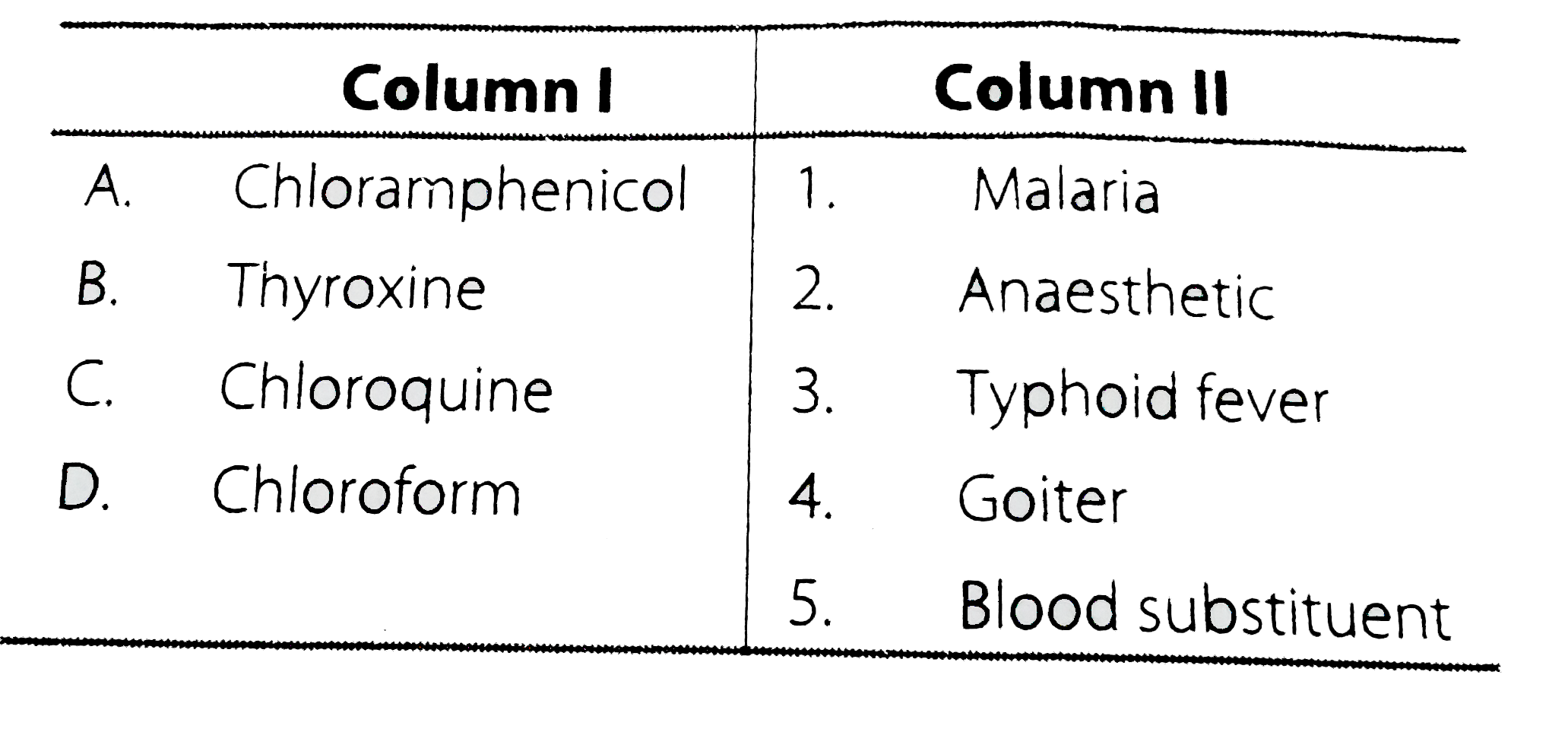Match the compounds given in Column I with the effects given in Column II.

(a)-(iii), (b)-(iv), (c)-(i), (d)-(ii)
Topper's Solved these Questions
- HALOALKANES AND HALOARENESBook:MODERN PUBLICATIONChapter:HALOALKANES AND HALOARENESExercise:NCERT examplar Problems (Assertion and Reason Type Questions)
Explore 10 Videos
- HALOALKANES AND HALOARENESBook:MODERN PUBLICATIONChapter:HALOALKANES AND HALOARENESExercise:MEMORY TEST (A. Say True or False)
Explore 14 Videos
- HALOALKANES AND HALOARENESBook:MODERN PUBLICATIONChapter:HALOALKANES AND HALOARENESExercise:NCERT examplar Problems (Short Answer Type Questions)
Explore 21 Videos
- GENERAL PRINCIPLES AND PROCESSES OF ISOLATION OF ELEMENTSBook:MODERN PUBLICATIONChapter:GENERAL PRINCIPLES AND PROCESSES OF ISOLATION OF ELEMENTSExercise:COMPETION FILE (Integer Type Numerical Value Type Questions)
Explore 5 Videos
- ORGANIC COMPOUNDS CONTAINING NITROGEN Book:MODERN PUBLICATIONChapter:ORGANIC COMPOUNDS CONTAINING NITROGEN Exercise:UNIT PRACTICE TEST
Explore 5 Videos
Similar Questions
Assertion ( A) Phosphorus chlorides ( tri and penta) are preferred over thionyl chloride for the preparation of alkyl chlorides from alcohols.
Reason (R) Phosphorus chlorides give pure alkyl halides.
View SolutionThe dipole moment of CH3F is greater than that of CH3Cl.
View SolutionAryl chlorides and bromides can be easily prepared by electrophilic substitution of arenas with chlorine and bromine respectively in the presence of Lewis acid catalyst. But why does preparation of aryl iodides requires presence of an oxidising agent?
View SolutionAmongst following, total number of metals which occur in native state in the earth's crust are : Pt, Ni, C, Hg, S, Zn, Au, Pb
View SolutionConvert
(i) 3-Methylaniline into 3-nitrotoluene.
(ii) Aniline into 1,3,5 - tribromobenzene.
View SolutionMatch the terms given in Column I with the compounds given in Column II.
View SolutionMatch the pollutants given in Column I with their effects given in Column II.

View SolutionMatch the pollutants given in Column I with their effects given in Column II.
View SolutionMatch the class of compounds given in Column I with their functions given in Column II.
View SolutionMatch the compounds given in column I with the effects given in Column II

View SolutionMatch the compounds/elements given in Column I with uses given in Column II.
View SolutionMatch the given compounds in Column-I with their appropriate descriptions given in Column II.
View SolutionMatch the compounds given in column I with the effects given in column II. .
View SolutionMatch the compounds given in Column I with the effects given in Column II.

View SolutionMatch the compounds given in Column I with the items given in Column II.
View Solution
